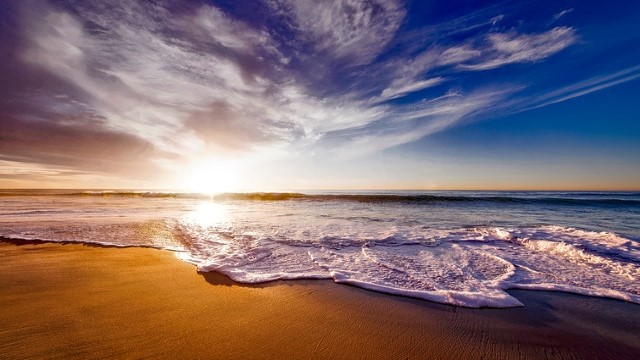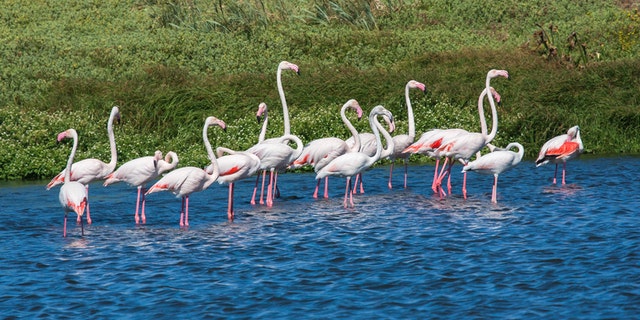Introduction
Only fifty years back we at long last dared to the moon. for the absolute first time we glance back at our own planet. Since than the human population has more than doubled. This series will celebrate the natural wonders that remains and reveal what we must preserve to ensure people and nature thrive.
Stability of nature on our planet
When human beings built their first settlement some 10000 years ago, the world around them on the land and the sea, was full of life. For generation, this stable Eden natured our growing civilizations. But now in the space of one just human lifetime, all that has changed. Wildlife population have, on an average declined by 60 percent. Without precedent for mankind's history, the solidness of nature can never again be underestimated. But the natural world is resilient, great riches still remain. With our help the Planet can recover.
Importance of natural world on planet:
Never has been important to understand how natural world works, and how to help one plant. Wildlife still flourishes in astonishing numbers in few precious places. Along the Peruvian state of America, seabirds congregate in colonies millions strong. They come here to breed. Every morning the birds leaves their colonies to fish in one of the richest seas on planet. It is an astonishing a daily migration of five million birds. The huge flocks of cormorants and boobies are all seeking one thing: anchovies.
The boobies carpet-bomb the shoals. More and more birds join the feeding frenzy. All in the immense assembly are here because of powerful oceanic current, the Humboldt. Sweeps up from the Antarctic bringing with its rich nutrients from ocean’s depths. 90 percent of the life in oceans is found in shallow seas close to the coast. Away from the land, the seas, for the most part, are a blue desert. Be that as it may, even these removed waters might be improved by the most unforeseen association with the land. The small crustaceans that feed on the ocean’s floating microscopic plants. But the mackerels are the food of dolphins. They derive the mackerel towards the surface, and into the range of birds. The wings that regularly impel the flying creatures through the air presently drive them six meters down through the water. Whilst the birds pick off the top of the shoals, the dolphins attack the underside. After 20 mints of feasting the predator from both the sea and the air have had their fill.
Some deserts, often from the hundreds of kilometers from the oceans, provide the raw material for life. Every year winds sweep up two billion tons of dust into the sky. At least a quarter of it eventually falls on the seas, providing nutrients needed by the microscopic organisms that are the foundations of the ocean life. Dolphins explore the vast, open ocean in search of riches that distant deserts may have nourished. A shoals of mackerel has discovered a swarm of krill. The stability of life on our Planet relies on such connections between different habitats. Water evaporating from the surface of the sea condensed to form great clouds and these eventually release the fresh water as rain. But these life-giving rains are not evenly spread over the land.
The vast salt pan in Africa is all that remains of an ancient lake. Its totally waterless and oven-hot. Few places are more hostile to the life. A Few tracks cross it, made by the animals searching unsuccessfully for water. But very occasionally, this whole landscape is transformed.
A huge deluge drenches the salt pan. Triggered by the unknown signal, flocks of lesser flamingos arrive from the thousands of kilometers away. The algae that the flamingos feed on have lane dormant as a spore in the dust. But most importantly, the birds are here to breed. Perfect condition might occur only once in a decade. The birds nest on the island far from the shore. They build mounds of mud that raise up their eggs and so keep them just marginally cooler than they would be at ground level. The water surrounding the island is so salty that predator do not venture into it, so the nests are safe. Thirty days later, thousands of chicks start to hatch. But there is no shelter the scorching sun. the water that once surround their island, protecting them, has now dried up altogether. The last to hatch step out into desperately harsh world. Somehow or other, the growing chicks must find fresh water to drink. They can not yet fly, so they must walk, guided by some of the adults. They may have to trek for 50 kilometers. Some cannot keep up. The salt has solidified around their legs. Most of the chicks in spite of everything, and having walked for many days, eventually reach fresh water, it is the end of the long journey. But only the first of their trials that will be imposed on these flamingos by the irregularity of the rains.
If the rainfall is more predictable and certain, than life can flourish more richly, both in number and variety. The Serengeti fields in east Africa support over a million wildebeest. The groups follow the occasional downpours, eating on the recently growing grass that comes afterward. Each year with three-week period, the females give birth to over a quarter of million calves. the youngster is just a few days old. Playing reinforces its legs for the long excursion that lies ahead. The calf must stay close to its mother. Without her milk, it would starve. And the herds are always traveling following the rains as they drift across the plains in order to find the fresh grazing. Eventually they reach woodlands. Hunting dogs wildebeest calves are the favorite prey. And the dogs are hungry. The calf must stay with its mother, protected within the herd. The dogs have incredible stamina but the calf is defended by the herd. They need the calf on its own, the mother blocks the dogs shielding her calf. It makes a run for safety and it just manages to get back to the herd. The eventual fate of this entire movement relies upon the consistency of the downpours, yet in addition on the the continued existence of the great open grasslands across which the herds make their immense journeys. In places where rains fall abundantly throughout the year, forests grow, and in the warmth of the tropics, they support the unparalleled richness of life.
Conclusion:
Half of all species of land-living animals lives in these stable worlds. The sheer diversity of breathtaking. We still have not catalogued, all the species that lives in the tropical forests. The relationship between them all are multitudinous and complex.











